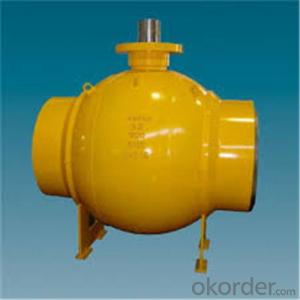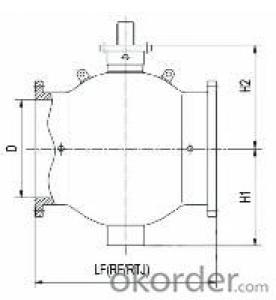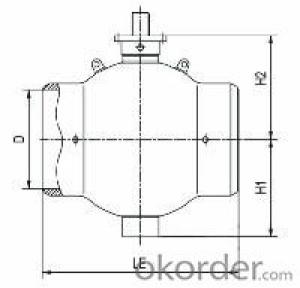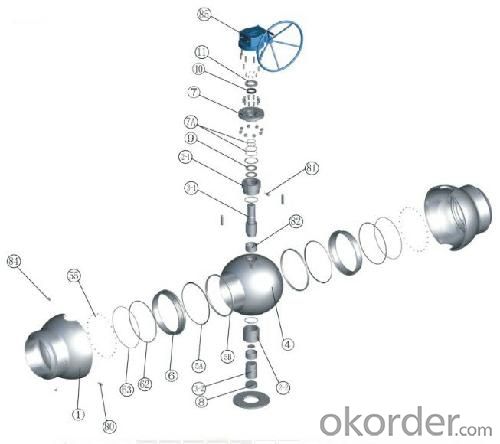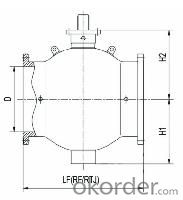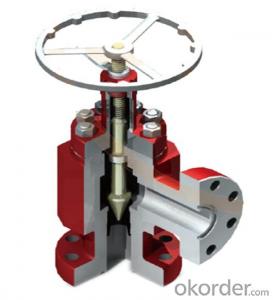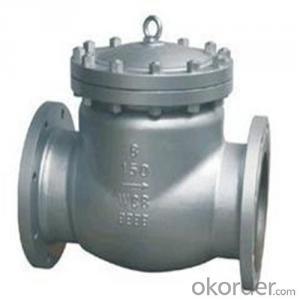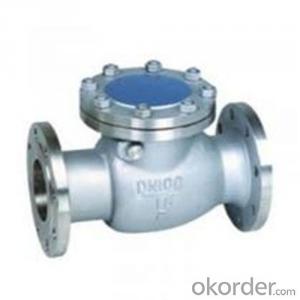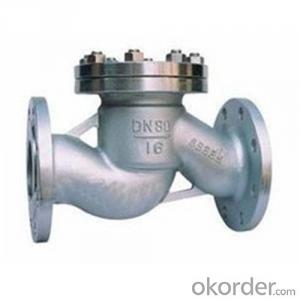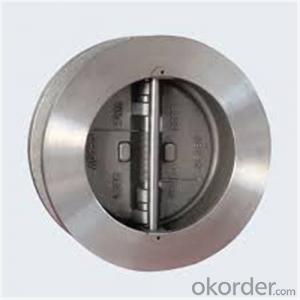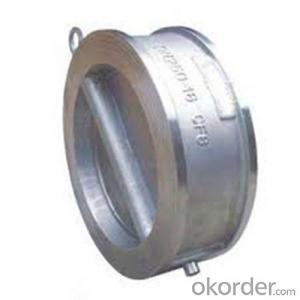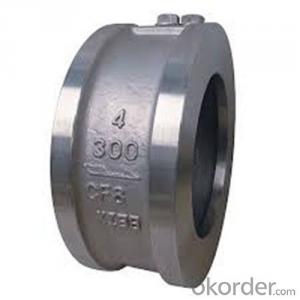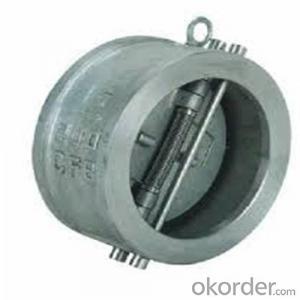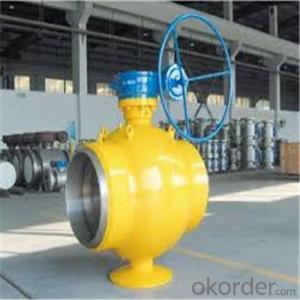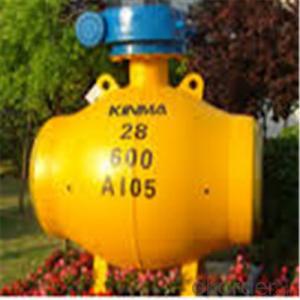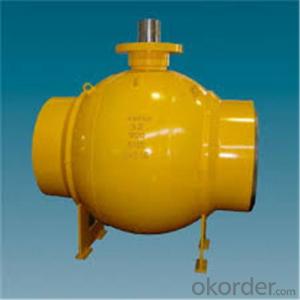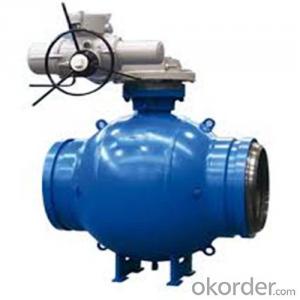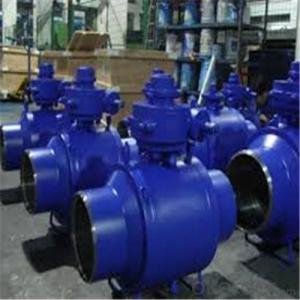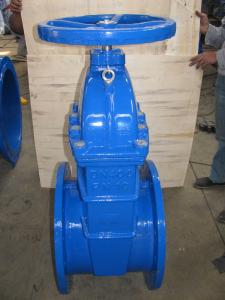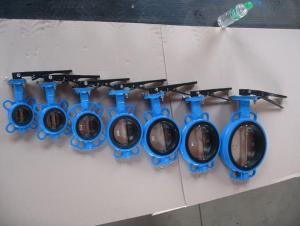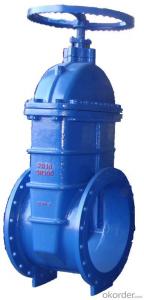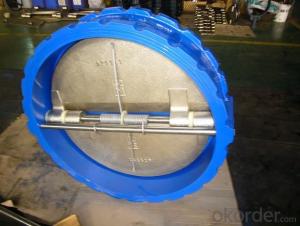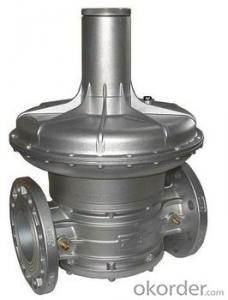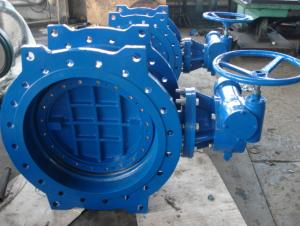Full Welded Forged Steel Ball Valve DN 34 inch
- Loading Port:
- Shanghai
- Payment Terms:
- TT OR LC
- Min Order Qty:
- 10 pc
- Supply Capability:
- 100 pc/month
OKorder Service Pledge
OKorder Financial Service
You Might Also Like
Design Features of full welded forged steel ball valve
The body of ball valve is full welded,selects high quality forged material,and adopts the advanced forged forming technology to form two semi-spheres which are welded into a whole in the middle of the body.This welding technology differentiates the ball valve form others,and makes the valve more spherically,so the valve structure is more compacter,lighter and stronger.Besides,the middle direct welding realize highly accurate valve body manufacturing,makes fully and completely sealing between the seat and ball.The full welding instead of bolts completely avoids the outside leakage,so ball valve is the ideal product for under-ground,offshore working platform and under-sea equipments.
Adopting fixed plates or trunnion to support the ball
The top and bottom of the ball is supported by upper and lower fixed plates or stem and trunnion,and the ball is accurately placed in the center of the ball valve to achieve complete seals and precise movements.When plate adopted,the force exerted by the medium to the ball is distributed via the plate to the left and right bodies,so that the stem does not bear the blending moment from the medium,but only the torque from the ball rotation during the opening/closing of the valve.The low-friction PTFE Teflon composite bearings installed between the ball axis and fixed plate and between the stem and the trunnion can absorb ball moving action caused by the pressure of the medium.This structure brings stable actions and easy operations for the ball valves,and the required operation torque can be reduced,so smaller actuators can be used,and the cost is cut down.
ball valve seat is floating structure,means the seat can move along the medium direction,so that the seat can fit against the ball all the time.
(Ⅰ)Double piston effect structure seat of full welded forged steel ball valve
Seat design is special double pistons effect structure,it can ensure the seal wherever the medium flows into the ball valve.

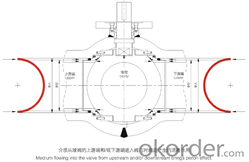
(Ⅱ)Seat multistage seal strucute of full welded forged steel ball valve
As following graphic instruction,on seat bearing ring,set two soft sealing rings(A and B)and metal sealing spherical surface which can seal with the ball.Seat ring A is spring loaded,which seals the surface with the ball tightly to the surface to form an initial seat;When there is pressure generated from medium,the piston force is generated to make seal ring A elastically deformed and seal ring B fit the surface of the ball surface due to the piston effect caused by area difference,thus the second seal forms.When the medium pressure is rising.It will generate huge pressure to seal ring A and seal ring B,so the two seals have a greater elastic deformation,then metal seal ball surface compact with ball surface to form the third level of metal to metal seal.
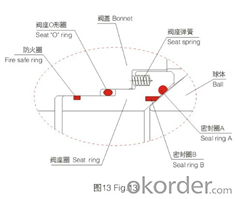
(Ⅲ)Secondary seat seal device of full welded forged steel ball valve
As the above graphic instruction,the secondary seal device(seat grease injection valve)can be chosen according to the actual working condition,medium requirement,seal requirement,etc.Seat ring grease injection valve is a one-way valve,installed on the body,which can prevent the leakage and inject grease under the outside force.When secondary seal is required,there is a grease injecting channel and hole on the seat ring.The grease can form a seal between the seat and the ball,and then stop the leakage.
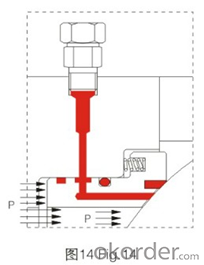
Standards Applied of full welded forged steel ball valve:
Design Standard | API 6D customize |
Connection Standard | ASME B 16.25-2007 ASME B 16.5 ASME B 31.4 ASME B 31.8 DIN GB、GB/T JB、JB/T JIS customize |
Test Standard | API 6D customize |
Face to Face | API 6D customize |
Pressure-teperature rating | ASME B 16.34-2004 customize |
Marking | MSS SP-25 customize |
FAQ of full welded forged steel ball valve:
Q1:I can’t find the type of steel check valve which I need. what can I do?
The chart above only lists out some common composition of steel check valve parts.We may provide other different parts material composition according to the customer's request or the actual valve working condition.
Q2:Which certification do your products pass?
Our products are in accordance with ISO 9001、ISO 14001、API 6A、API 6D、TS CE、API607/6FA/BS6755.
Q3:How can I place an order?
The only one thing you should do is to tell us the sepecification about type 、quantity and mode of transportation, then we will send you quotation within 24 hours.
- Q: I just installed three anti-siphon valves(jar top,orbit) for a sprinkler system the main water line is 3/4 then goes into my manifold (pvc)3/4 schedule 40,usually when you turn on the water it comes to a stop where you re valves begin then you either open them manually or their set up through you re timer, the problem im having when i open the main water line the water goes straight through the valves without me even opening them my question is can it be to much pressure or what can the problem be? any info helps thank you
- another thing that can cause this is when assembeling the manifold it got filled full of rocks that are holding the diaphrams open
- Q: I opened the OPD valve on the BBQ propane tank and propane spray out, I have heard that propane should come out only when it is hooked. Is there something wrong with the propane tank?
- The okorder /... I hope this helps!
- Q: How does a deluge valve differ from a standard alarm valve in a wet system?What are differences from a standard wet pipe system regard alarm trim and NPFA codesAlso if an existing system, over 2000sft, (pipe sched method) has no siamese connection, and I am adding addtional heads via the same pipe schedule method - Am i required to upgrade the riser/alarm trim to include a fire department connection? - (re:NFP13, 2002)
- Define Deluge
- Q: so here are the details. i've been using my trumpet for about 6-8 years now and 1 if not 2 valves get stuck on my trumpet. the problem is not the oil as i have over oiled them too and no go. its that when i try to put my valves back in their place and twist them they don't stay in place,move ,and making either my valves stuck or making my trumpet not do a sound. what should i do? repair shop or buy a new one? i hear the clicking sound when i put them back but still all that does is either make my valve more sticky
- You really need valve oil I have used olive oil in a pinch
- Q: can anyone tell me the difference between Pressure Safety valveTemperature Safety ValvePressure Relief Valveused in a process industry
- Doleful is an adjective which means that it describes a noun. Similar words include: dreary, forlorn gloomy, grieving, lamentable, melancholy, mournful, pitiful, plaintive, sad, sorrowful. It was a very doleful day for Mary when she had to leave her friend behind. Lament is a verb. It means to grieve or to bemoan the loss of something. Frank lamented the death of his beloved cat. Woe is a noun. Other words meaning the same thing are misfortune, sorrow, suffering, grief. misery. Woe to the person who breaks his promise to me. Their woes became unbearable to handle.
- Q: So i was looking for car parts and i was using my favorite website, and i was looking at turbos which are wicked costly. But i saw some blow off valves which i have heard about before. But i was wondering if you need a turbo in order to have a blow off valve installed into your car. And if you don't my next question would be is it hard to put one in and how?? Thank you for your time..
- A blowoff valve goes onto your intake or the piping from your turbocharger to make sure that you dont run to much pressure they are adjustable to whatever pressure you desire. Usually people running a positive displacement blower or a turbochargers run them. That being said I'm sure that you could put one on your car but without a power adder it would never blow off. Except in the case of a intake manifold overpressure such as a backfire.
- Q: used in pipe line
- To allow adjustment for different pressures. The bellows extends under pressure. It works against the resistance of a spring to open the valve at the desired pressure.
- Q: How come my boiler supply valve isnt letting water into my boiler, i have a cold water supply hooked up to it with the valve on i have tested the copper pipe goin into it and water flows into it, but when It reaches the valve it stops. I understand that it my have a backflow preventer in it and I am wondering if that could be malfunctioning. The hole you see on the front is where my expansion tank screws in. Also where could I get a new Valve. Thanks.http://img149.imageshack.us/i/boilerfillvalve.jpg/
- I work on antique steam boilers and engines for a hobby and if your supply valve isn't letting feedwater into the boiler, I'm going to tell you right now that you potentially have a VERY dangerous situation on your hands. Until you get this issue resolved, I would recommend that you not steam this boiler up under any circumstances, unless you have a backup feedwater delivery system that is working correctly. Many people don't know this, but a low water condition in a boiler under steam is essentially a ticking time bomb and can result in a fatal explosion. As to what may be causing it, I would say it's possibly one of two things: 1.) The check valve has been installed backwards and the flow of water is basically pushing it shut. 2.) The check valve is installed correctly, but is frozen shut due to corrosion and scale. Either way, I would have a certified boiler inspector come out and take a look at it; he can probably tell you more than I can.
- Q: I bought my first car recently. but it has a high idle and smoking problem, i already replaced the spark plugs. I've been reading about the exhaust gas re-circulation valve. but i cant find it. where exactly is the EGR valve located in a 1999 KIA Pride?
- the EGR wont reason a hissing noise, if the EGR replaced into undesirable, there could be a soft stumble off the line, or tough idle. a hissin noise sounds like a vacuum leak someplace. open the hood while the vehicle is working and notice in case you may hear the place the hissing is coming from. it ought to be coming from a line someplace.
- Q: emission control valve toyota camry
- emissions control valve is another name given for an exhaust gas recirculator valve(egr valve). This valve routes a sample of your cars exhaust gases back into the cylinder to be re-burned and therefore lowers emissions.The ports to this valve become clogged over time and can create performance issues
Send your message to us
Full Welded Forged Steel Ball Valve DN 34 inch
- Loading Port:
- Shanghai
- Payment Terms:
- TT OR LC
- Min Order Qty:
- 10 pc
- Supply Capability:
- 100 pc/month
OKorder Service Pledge
OKorder Financial Service
Similar products
Hot products
Hot Searches
Related keywords
